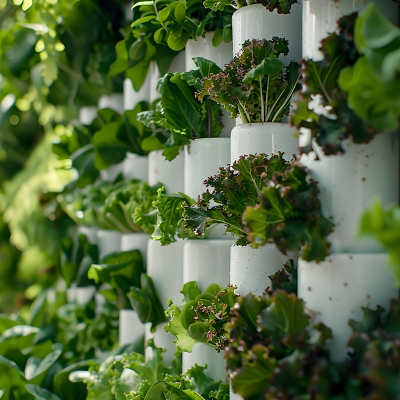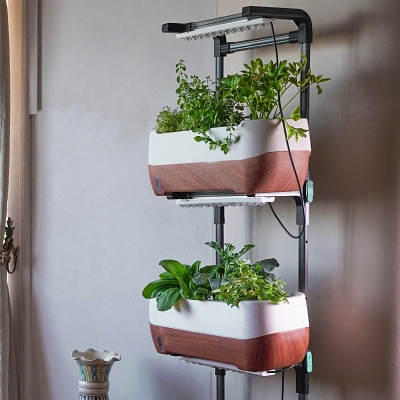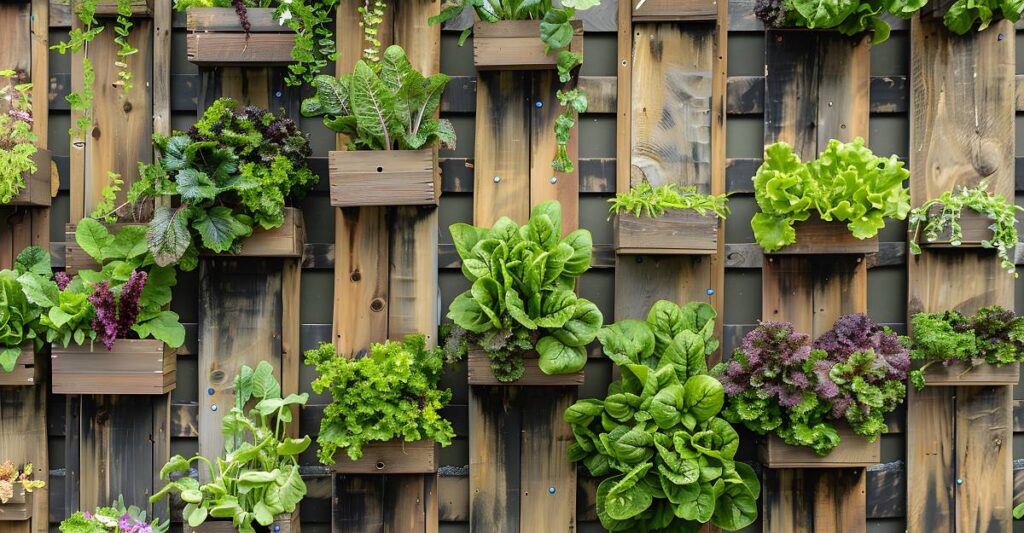Creating a vertical garden in small spaces may seem like a challenge, but the Vertical Gardens for Small Spaces Course makes this practice easier for anyone, regardless of the available area. This type of course provides valuable guidance for growing plants on walls, shelves and other vertical supports, making the most of the characteristics of each environment.
Using BotanicApp, a specialized gardening app available for Android, this course offers techniques for planting, caring for and expanding a home garden without needing large areas. Learning about vertical gardens with the help of an app makes the process practical and executable, helping both beginners and those who want to optimize spaces and transform the environment into a greener place.
Related searches:
How the vertical gardening course can transform small spaces
Having a vertical garden at home is more than just a hobby; it is a practical way to create a green and productive space, even in small spaces. The vertical gardening course offers clear directions for transforming walls, balconies and small corners into ideal places for growing herbs, spices and even vegetables. In addition to enhancing the environment, plants bring more freshness, help to renew the air and make the space visually pleasing.
One important fact is the use of methods adapted to locations with limited light or ventilation. By learning how to correctly position each species and adapting watering and care, it is possible to create a successful vegetable garden in any conditions. This knowledge gives you more confidence to take advantage of even small spaces that seemed to have no use.
The course also teaches about the benefits of combining species to improve plant growth and health. The technique known as “intercropping” allows you to create a microenvironment where each plant contributes to the development of the others. Thus, even with a small garden, it is possible to grow several varieties, harvesting fresh herbs and healthy ingredients at home.
Advantages of learning through BotanicApp
BotanicApp is an accessible tool that complements the vertical gardening course with valuable information and ongoing support for the user. One of the great advantages of using the app is the plant identification, which allows the student to recognize different species and better understand their light, water and nutrient needs. Thus, when planning a vertical garden, it is possible to choose the most suitable plants for each environment, avoiding cultivation problems.
Additionally, BotanicApp offers watering and care reminders, a useful feature for beginners who are not yet experienced in gardening. With scheduled reminders, it is easier to care for plants regularly, which contributes to successful cultivation. This assistance is essential, especially for those who have a busy routine and need help remembering basic garden care.
The app also has an up-to-date database with information on a wide variety of plants. This is especially useful for those who want to explore new species or expand their vertical garden, as it offers detailed data on each plant and clear instructions for each stage of cultivation. In this way, BotanicApp serves as a complete guide to help the student in their day-to-day life.

Learn how to create sustainable vertical gardens with the BotanicApp course
Sustainability is one of the pillars of vertical gardens, and the course highlights practices that promote responsible and conscious cultivation. During the course, students learn techniques for reusing materials and using resources, such as water and organic fertilizer, which reduce environmental impact. This approach allows you to create a garden that is not only functional, but also environmentally responsible.
Another important aspect is the use of recyclable containers, such as PET bottles and wooden pallets, which can be easily adapted to set up a vertical garden. The course explores methods for reusing these materials in a creative and suitable way, helping to reduce waste and save resources. In addition, it teaches how to compost on a small scale, transforming food scraps into natural fertilizer for the garden.
With these practices, the course contributes to greater environmental awareness, encouraging students to adopt a more sustainable lifestyle. The idea is that each vertical garden is a healthy cultivation space and, at the same time, a conscious choice, aligned with ecological and sustainable principles.
Adapting vertical gardens to different types of plants
Choosing the right plants is one of the most important factors for the success of a vertical garden. During the course, students learn how to select species based on environmental conditions and how easily they adapt to vertical structures. For example, herbs such as rosemary, mint and chives are ideal for small spaces and require relatively simple care, making them popular options for home gardens.
In addition to herbs, it is possible to grow vegetables such as lettuce, arugula and spinach, which grow well in vertical spaces with adequate support. The course presents methods for organizing plants so that growth is uniform and all receive sufficient light. In this way, the student learns to optimize space and adapt cultivation according to the specific needs of each plant.
Techniques for managing pests and diseases are also covered, a fundamental aspect for plant health. During the course, students learn to identify and control pests naturally, using solutions such as garlic extracts and soap, which are functional and safe. This guidance is essential to keep the garden healthy and productive, without the use of chemicals that could harm the environment.
Benefits of growing vertical gardens in urban environments
Vertical gardens are a practical solution for those who live in urban centers and want to grow their own food. The course encourages this practice, showing how small gardens in apartments or areas with little vegetation can contribute to a healthier and more balanced life. In addition to providing fresh herbs and vegetables, growing at home encourages healthier habits and promotes a greater connection with nature.
By cultivating a vertical garden, students also gain a greater appreciation for the food production process and the importance of a more conscious diet. This contact with cultivation encourages greater care for the origin of food and encourages the reduction of waste. Amid the fast pace of cities, gardening brings moments of tranquility and relaxation, promoting well-being.
For those looking for a hobby or activity to relieve stress, gardening offers emotional benefits that go beyond the satisfaction of harvesting. The act of caring for plants, watching them grow, and harvesting the fruits of one's own cultivation becomes a pleasurable and therapeutic activity, contributing to mental and physical well-being.

Frequently asked questions about vertical gardening offered by BotanicApp
1. Do I need to have previous gardening experience to take the vertical gardening course?
No, the course is suitable for both beginners and those who already have some knowledge of gardening. The lessons start with basic guidelines, making the learning accessible to all levels.
2. Is the BotanicApp essential to follow the course?
Although the course can be taken without the app, BotanicApp offers useful tools such as plant identification, care reminders and a complete information bank, which makes it much easier to monitor and achieve successful cultivation.
3. What types of plants can I grow in a vertical garden?
The course presents a variety of plants suitable for vertical spaces, including herbs such as basil, rosemary and mint, as well as vegetables such as lettuce, arugula and spinach, which adapt well to these environments.
4. Can I set up a vertical garden in an apartment with little natural light?
Yes, the course teaches strategies for choosing plants that adapt to low light conditions, as well as providing guidance on the use of artificial lighting to complement natural light in shadier environments.
5. How does the course address pest and disease control in plants?
The course offers tips on natural pest control, such as the use of homemade compounds that are safe for your health and the environment, ensuring that your garden remains healthy without the use of chemicals.
Did you enjoy learning more about vertical gardens?
As you learn more about vertical gardening, you’ll realize that transforming small spaces into green spaces is an accessible and enriching practice. With the support of the BotanicApp course and tools, even the smallest corners of your home can become productive spaces, contributing to your health and well-being in a practical and personalized way.
Learning to grow your own food at home offers a new perspective on what we consume and how we relate to nature, especially in the midst of urban routine. By applying the knowledge you have acquired, you will enjoy harvesting fresh, natural ingredients, as well as enjoying the therapeutic benefits that gardening provides.

